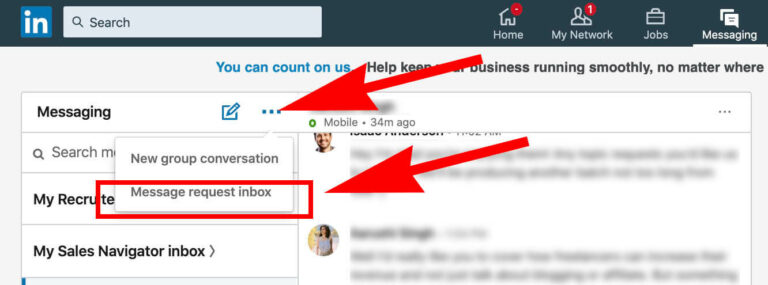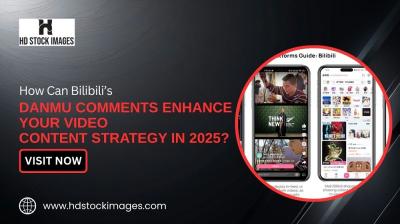In today's fast-paced digital world, communication through platforms like LinkedIn has become essential for networking and professional growth. But how can you tell if your messages are actually being read? Understanding the nuances of LinkedIn messaging can provide you with valuable insights. In this post, we'll explore the tools and features
Understanding LinkedIn Messaging Features

LinkedIn messaging is more than just a simple chat feature; it’s a powerful tool for professionals to connect, network, and collaborate. Here’s what you need to know:
- Read Receipts: While LinkedIn doesn’t offer traditional read receipts like some other messaging apps (like WhatsApp), it does notify you when a message has been sent and delivered. Look for the little blue circle that turns into a checkmark, indicating delivery.
- Activity Status: You can see when your connections are active on LinkedIn. If they’re online shortly after you send a message, there’s a higher chance they’ve seen it. This is indicated by a green dot next to their profile picture.
- Engagement Indicators: If you notice that someone likes or comments on your posts after you’ve messaged them, it might imply they’re engaged with your messages as well.
It's important to remember that while these features offer clues, they are not foolproof. Some users may read messages without responding or may not even check their LinkedIn regularly. Therefore, it's wise to follow up respectfully if you haven’t received a reply within a reasonable time.
| Feature | Description |
|---|---|
| Read Receipts | Shows if a message has been delivered. |
| Activity Status | Indicates if a user is currently online. |
| Engagement Indicators | Likes or comments on posts hint at message engagement. |
By leveraging these features, you can better understand your messaging interactions on LinkedIn and enhance your networking strategy.
Also Read This: How to See When You Connected with Someone on LinkedIn for Better Relationship Management
3. Using Read Receipts
Ah, the elusive read receipt! This feature is like a double-edged sword in the world of LinkedIn messaging. It can be incredibly useful for gauging whether your hard-crafted messages are being acknowledged or left on read. However, it’s essential to note that read receipts are not universally available, and their effectiveness can vary based on user settings.
To enable read receipts, you need to dive into your LinkedIn settings. Here’s a simple step-by-step guide:
- Click on your profile picture in the top right corner.
- Select “Settings & Privacy” from the dropdown menu.
- Navigate to the “Communications” tab.
- Look for “Messaging experience” and toggle on the read receipts option.
Once activated, when your recipient reads your message, you’ll see a little checkmark next to it. But remember, not everyone wants to share their read status. If the person you’re messaging has disabled this feature, you won’t receive any notification, which can be frustrating.
So, embrace the read receipt with caution! It offers insight into your message’s reach but also requires respect for the recipient’s privacy preferences. Happy messaging!
Also Read This: Cost Breakdown: How Much LinkedIn Charges Recruiters for Access
4. Observing Recipient Engagement
Engagement is the heartbeat of any successful LinkedIn interaction. Instead of fixating solely on whether your message has been read, pay attention to how the recipient engages with your conversation. This can reveal much more than a simple read status.
Here are some signs to watch for:
- Response Time: If they reply quickly, it’s a good indicator that your message resonated with them.
- Content of the Response: Are they asking questions or providing detailed insights? This shows genuine interest!
- Follow-up Messages: If they continue the conversation or reference your earlier points, they’re invested.
Additionally, you can track their activity on LinkedIn. If they like or comment on your posts after messaging, it can indicate that they value your insights and are engaged with your professional narrative.
So, as you assess recipient engagement, think of it as a dance—a mutual exchange of ideas and interests. By observing these subtle cues, you’ll get a clearer picture of your messaging effectiveness and build stronger connections over time!
Also Read This: How to Create a Bulleted List on LinkedIn Formatting Tips for Posts
5. Tips for Crafting Effective Messages
When it comes to LinkedIn messaging, the key to getting responses lies in crafting effective messages. Here are some tips to help you stand out:
- Personalize Your Message: Start with a friendly greeting and mention something specific about the recipient. For instance, “Hi [Name], I noticed we both attended the [Event] last month!” This shows you’ve done your homework and makes the interaction feel more genuine.
- Be Clear and Concise: Get straight to the point! People appreciate brevity. Instead of saying, “I wanted to take a moment to reach out and discuss some potential opportunities,” try, “I’d love to discuss collaboration opportunities!”
- Use a Call to Action: Encourage a response by asking a direct question or suggesting a specific action. For example, “Would you be open to a 15-minute chat next week?” This gives them a clear idea of what you’re looking for.
- Mind Your Tone: Keep your tone professional yet approachable. Avoid jargon and overly formal language. A conversational tone helps in making the recipient feel comfortable.
- Follow-Up: If you don’t hear back, don’t hesitate to send a gentle follow-up after a week or so. A simple, “Just wanted to check in to see if you had a chance to consider my previous message” can work wonders!
6. Conclusion
Determining if your LinkedIn messages have been read can be tricky, but crafting effective messages can significantly increase your chances of getting a response. Remember, it’s not just about the content of your message but also how you deliver it. Use personalization, clarity, and a friendly tone to engage your audience.
Ultimately, success on LinkedIn comes down to building relationships. If your messages are compelling and respectful, you're more likely to foster meaningful connections. So, the next time you hit “send” on a LinkedIn message, keep these tips in mind!
By using these strategies, you’ll not only enhance your communication skills but also improve your professional networking experience. Good luck!
 admin
admin








